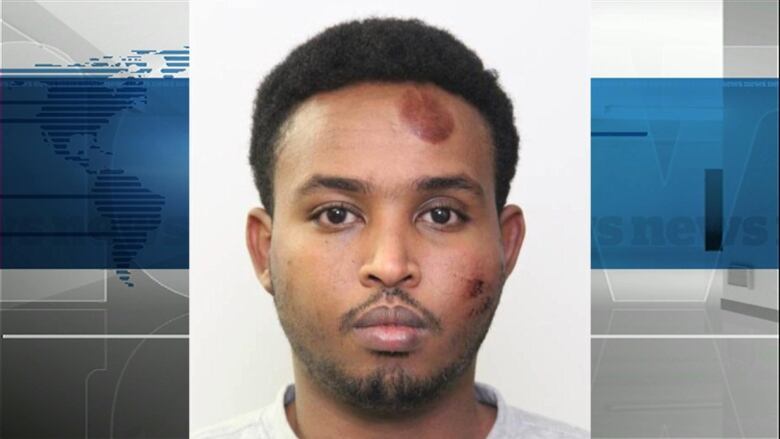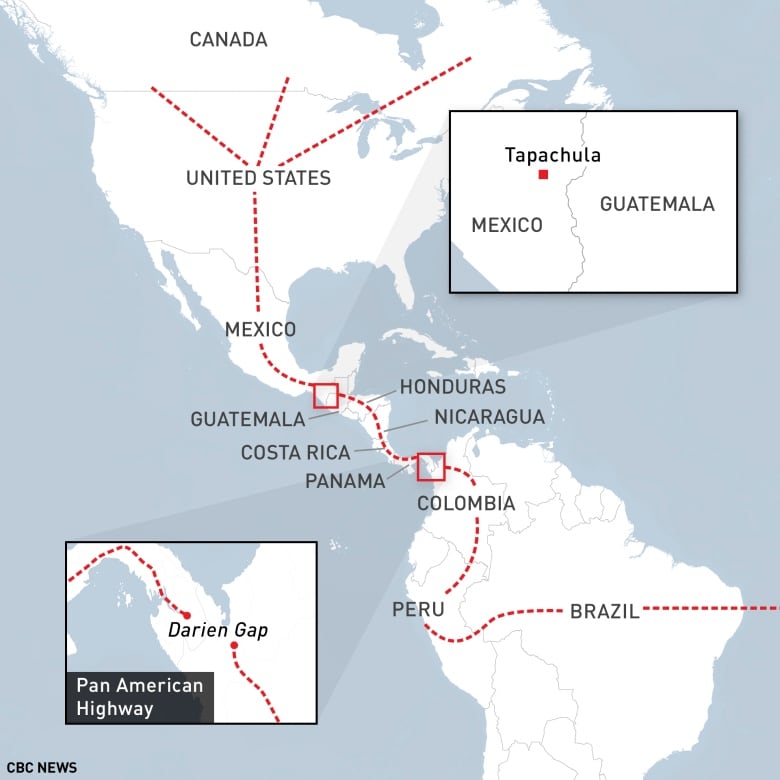Man charged in Edmonton attacks crossed into U.S. from Mexico, records show
'You can't look at an asylum record. They're strictly confidential, for obvious reasons'

At a busy border crossing just south of San Diego, Abdulahi Hasan Sharif walked into the United States on July 12, 2011.
He had no documents and no right to be there. Almost immediately, hewas turned over to Immigration and Customs Enforcement.
It's not known exactly what route the Somali refugee took to reachthe U.S. border.
He is now in the Edmonton Remand Centre after beingarrested over the weekend and later charged with 11 offences, including five counts of attempted murder.

Some have Canada in mind as their final destination,while others end up here if their asylum claims are denied in the United States.
What happened after Sharifwas taken into U.S. custody is unclear; American officialswon't say if he actually made an asylum claim in that country. But U.S. Immigration and Customs Enforcement has confirmed that just a few months later, on September 22, 2011, an immigration judge ordered Sharifremoved to Somalia.
Sharif never appealed that decision.
"A deportation gets issuedbut itdoesn't getexecutedright away," said Michael Greene, an immigration lawyer in Calgary.
"If they're considered not a danger to the public and not a flight risk,they release them it's one of the reasons they have some 11 million illegals in the U.S."
Sharif, 30, is currently in custody after allegedly stabbing a police officer in Edmonton and plowing into four pedestrians on Jasper Avenue on Saturday night.
Asylum records strictly private
Sharif's path to the United States was somewhat unusual for Somalis, said Michael Davis, an immigration lawyer in Minneapolis, which is home to the largest Somali diaspora in the world.
The vast majority of those Somalis arrived in the United States as refugees, Davis said. That means they had been screened and approved for refugee status before entering the United States, and had permission to be there upon arrival.
For those who do claim asylum after arriving on American soil,the likelihood ofbeing accepted is low. About 55 per cent of Somali asylum seekers to the United States were denied asylum between 2011 and 2016, according to the Transactional Records Access Clearinghouse, a data research centre basedat Syracuse University.
If Sharif did make an asylum claim, the record or the reasons why a judge would have denied it are confidential.
"You can't look at an asylum record," Davis said. "They're strictly confidential, for obvious reasons."
He also noted that claims can be denied for a variety of reasonswhether someone claims asylum past state-set deadlines or if they've been involved in criminal activity or if their claim of persecution isn't believed.
Officials in the U.S. have said Sharif had no known criminal history when he was picked up by ICE.
Claimants released, if no threat to public
At SanYsidroborder crossing where Sharifarrived into the United States, cars queue for kilometres along themega-highwayson either side. So do throngs of people, looking to do a quick day trip to Tijuana or to reach their jobs in California.
In January 2012, months after Sharifhad been released from U.S. immigration custody, ICE lost track of him. There are millions of undocumented people in the United States and it appears that, for a few months at least, Sharif was among them.
Canadian officials have confirmed that Sharifarrived in this country at an official port of entry in 2012. He went through the "regular process" and was granted refugee status later that year, the government said.
Canadaaccepted about 90 per cent of asylum claims from Somaliain 2012, according to documents from the Canadian Council for Refugees.
-
Man charged with 5 counts of attempted murder for Edmonton attacks
-
Emergency radio transmissions offer chilling glimpse into Edmonton attacks, police pursuit
Some are asking why Sharifcould claim asylum in Canada after he'd been ordered deported from the United States.
But it's unclear if he ever actually applied for asylum in the U.S. If he did and he was denied, it would be much harder to make a claim here, let alone have it accepted, said Greene, the Calgary immigration lawyer.
Under the Safe Third Country Agreement, immigrants must claim asylum in the first country where they arrive in Sharif's case, that would have been the U.S. But there are some exceptions: namely if someone has a relative in Canada, or if they are a minor.
But Greene stressed that he's unfamiliar with Sharif'scase.
"It's quite possible he never claimed asylum there," he said.
"Normally, if someone claims asylum in the U.S., it's quite hard for them to win it here. But you've got a bit of speculation there about what happened in the U.S."












_(720p).jpg)


 OFFICIAL HD MUSIC VIDEO.jpg)
.jpg)



























































































